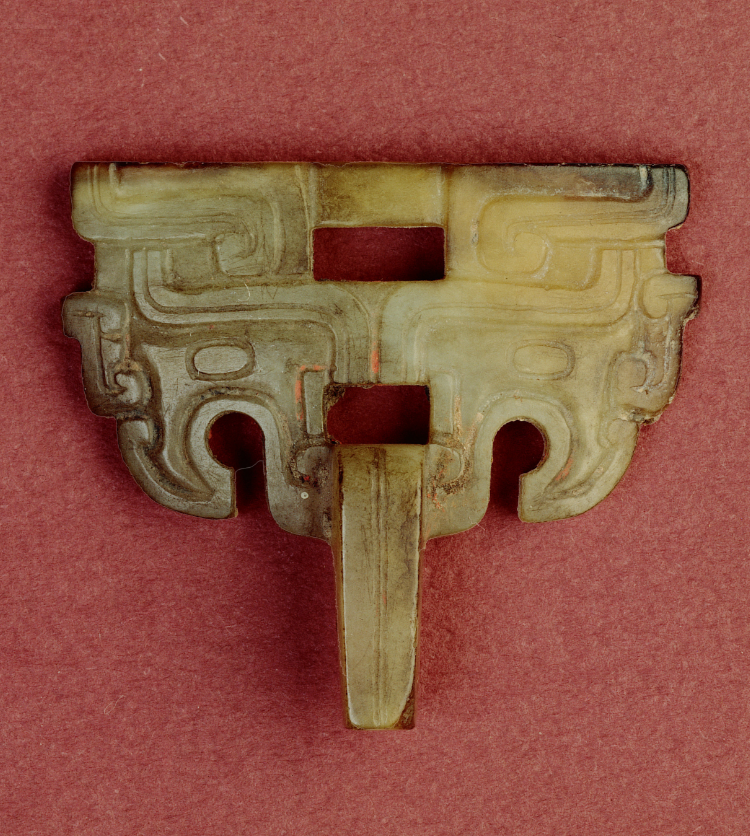First look for the rectangular hole in the middle. There are oval eyes on both sides of it with curving eyebrows rising above the eyes. Don’t those pointed horns extending down along the edge of the eyes look like tusks? Do you think that long, straight part at the bottom is a high-bridged nose? Or is it sticking out its tongue?! An expression such as this which is all curving lines and geometric shapes, making it impossible to identify a motif of an actual animal, is called an animal-mask decoration or taotie motif, named after the mythological animal depicted.
This jade object was unearthed at the Liuligejia tomb in Huixian in Henan Province. It has a peculiar form that is rarely seen, as no motifs have been engraved on the back and its shape is very similar to that of door knockers set into doors as decoration. Door knockers are generally shaped like the heads of animals with positive connotations such as tigers and lions or mythological animals like the taotie. These animals have fierce characters, so placing them on doors serves to ward off evil. As such, scholars believe that this jade ornament may have been an early jade door knocker. It might also reflect how the functions of jade objects have changed during the Spring and Autumn period, as they were no longer just accessories worn on the body.
